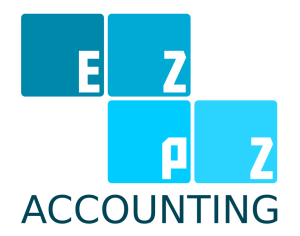Risk Management and Auditing: Ensuring Compliance in a Complex Business World

Are risk management and auditing important to businesses? The truth is, the importance of effective risk management and auditing cannot be overstated.
As businesses expand globally, integrate
advanced technologies, and navigate intricate regulatory frameworks, the need to identify, assess, and mitigate risks has become paramount.
This article delves into the symbiotic relationship between risk management and auditing, illuminating how they work in harmony to ensure compliance and foster stability in a complex business world.
Understanding Risk Management
Risk management involves the systematic process of identifying, assessing, and prioritizing uncertainties that could affect the achievement of an organization’s objectives. These uncertainties, or risks, can stem from various sources including financial market fluctuations, regulatory changes, cybersecurity threats, and natural disasters. In the context of the complex business world, risks are multifaceted and can have cascading effects on a company’s operations, reputation, and bottom line.
Risk Identification
The first step in effective risk management is identifying potential risks. This involves a comprehensive analysis of internal and external factors that could impact the organization. Internal risks might include operational inefficiencies or employee misconduct, while external risks could be economic downturns or geopolitical tensions. Thorough risk identification forms the foundation upon which risk management strategies are built.
Risk Assessment
Once risks are identified, they need to be assessed in terms of their impact and likelihood. This step involves quantitative and qualitative analysis to gauge the potential consequences of each risk. Risks are often categorized based on their severity, allowing organizations to prioritize their efforts and resources toward mitigating the most significant threats.
Risk Mitigation
After assessing risks, organizations develop mitigation strategies to minimize their impact. These strategies can include implementing internal controls, diversifying investments, purchasing insurance, or developing contingency plans. Risk mitigation is proactive and aims to reduce the probability of a risk occurring or lessen its impact if it does materialize.
The Role of Auditing in Risk Management
Auditing serves as a crucial tool within the realm of risk management. Auditors play the role of independent assessors, evaluating the effectiveness of an organization’s internal controls and risk management processes. By conducting thorough audits, businesses can gain valuable insights into their risk landscape and identify areas that require improvement.
1. Internal Auditing
Internal auditors work within the organization, scrutinizing internal controls, financial records, and compliance procedures. Their objective is to provide an independent, objective assurance and consulting activity designed to add value and improve an organization’s operations. By regularly auditing internal processes, businesses can identify potential vulnerabilities and rectify them before they escalate into significant risks.
2. External Auditing
External auditors, often employed by independent auditing firms, conduct audits on a company’s financial statements and internal controls. These audits are typically mandated by regulatory bodies to ensure financial transparency and compliance with accounting standards. External auditors provide an unbiased evaluation of a company’s financial health, offering stakeholders, including investors and regulatory authorities, confidence in the accuracy of financial reports.
3. Compliance Auditing
Compliance audits specifically focus on ensuring that an organization adheres to relevant laws, regulations, and industry standards. These audits are critical in highly regulated sectors such as finance, healthcare, and energy. Compliance auditors verify that the organization’s policies and procedures align with legal requirements, reducing the risk of penalties and legal consequences.
The Synergy Between Risk Management and Auditing
The relationship between risk management and auditing is symbiotic. Risk management provides the framework for understanding, assessing, and mitigating risks, while auditing validates the effectiveness of the risk management processes. This synergy creates a robust system that not only safeguards an organization against potential threats but also ensures its long-term sustainability and growth.
1. Proactive Risk Mitigation
By combining risk management and auditing practices, organizations can proactively identify and mitigate risks before they escalate. Auditing acts as a check and balance, ensuring that the risk management strategies in place are not only well-defined but also effectively implemented. This proactive approach prevents potential risks from evolving into significant challenges.
2. Enhanced Decision-Making
Regular audits provide management with accurate and reliable information about the organization’s risk landscape. Armed with this knowledge, decision-makers can make informed choices about resource allocation, investment strategies, and business expansion. Accurate risk assessments enable businesses to pursue opportunities strategically while mitigating potential threats.
3. Stakeholder Confidence
Transparent and effective risk management, validated through audits, enhances stakeholder confidence. Investors, regulatory authorities, customers, and employees are more likely to trust organizations that demonstrate a thorough understanding of their risks and take proactive measures to address them. This trust is invaluable, especially in today’s competitive and scrutinized business environment.
4. Regulatory Compliance
In an era of stringent regulations, compliance is non-negotiable. Audits ensure that organizations adhere to these regulations, avoiding legal consequences and reputational damage. By aligning risk management strategies with regulatory requirements, businesses can navigate complex legal landscapes without compromising their operations.
Conclusion
The collaboration between risk management and auditing is indispensable for businesses seeking resilience and stability in a complex and uncertain world.
The symbiotic relationship between risk management and auditing forms the foundation upon which businesses can build enduring success, fostering a culture of innovation, responsibility, and unwavering integrity.
Through this strategic alliance, organizations can navigate the complexities of the modern business landscape, ensuring compliance, mitigating risks, and achieving sustainable growth.
